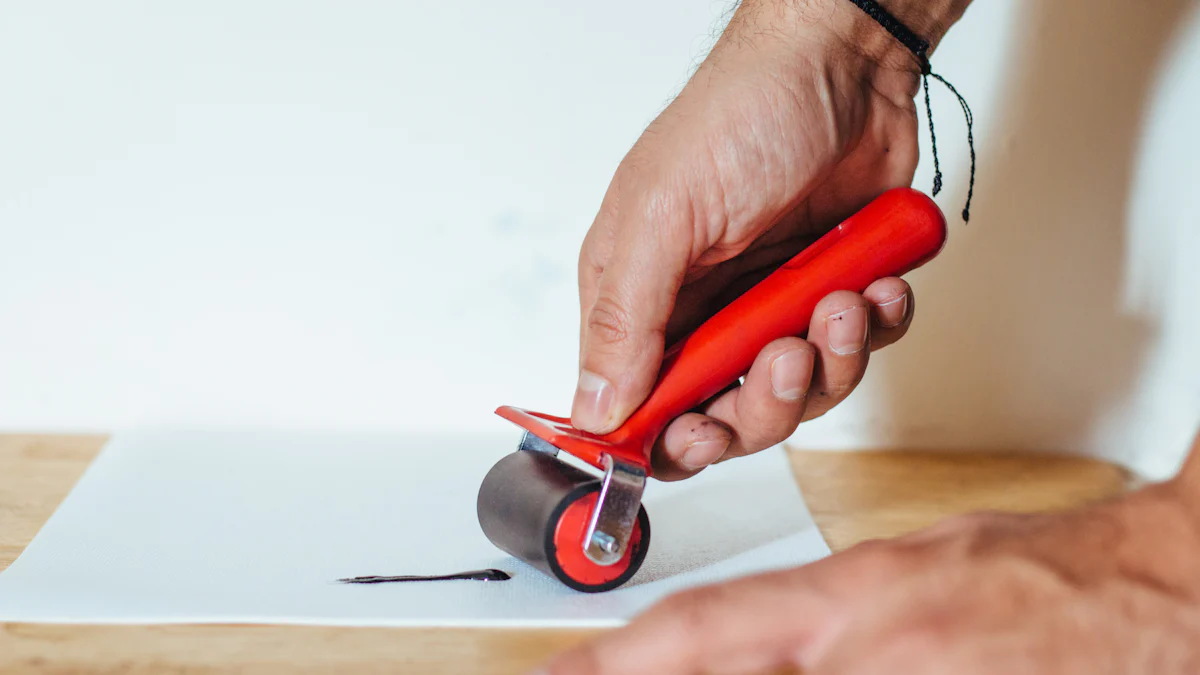
A rotary cut tool serves as an essential companion for various tasks. This tool offers versatility and speed, enhancing productivity across multiple industries. Woodworking enthusiasts find the rotary cut tool invaluable for shaping, carving, and sanding wood. The tool’s precision ensures quick and dust-free cuts. Correct usage of the rotary cut tool guarantees safety and efficiency. Mastery of this tool opens doors to a wide range of applications, from construction to crafts. Understanding how to use the rotary cut tool properly can transform your projects.
Understanding the Rotary Cut Tool
Components of a Rotary Cut Tool
Blade
The blade serves as the primary cutting component in a rotary cut tool. High-quality steel or carbide often forms the blade, providing durability and sharpness. The blade rotates at high speeds, allowing precise cuts through various materials. Regular inspection ensures the blade remains sharp and effective.
Handle
The handle provides the user with control over the rotary cut tool. Ergonomic designs enhance comfort during prolonged use. A firm grip on the handle ensures stability and precision while cutting. Handles often feature non-slip materials to prevent accidents.
Safety Guard
The safety guard protects users from accidental contact with the blade. This component covers the blade when not in use, reducing the risk of injury. Users should always ensure the safety guard is in place before operating the tool. Regular checks confirm the guard functions correctly.
Types of Rotary Cut Tools
Manual Rotary Cut Tools
Manual rotary cut tools rely on user effort to operate. These tools suit small projects and detailed work. Users find manual tools ideal for tasks requiring precision and control. The absence of a motor makes these tools quieter and more portable.
Electric Rotary Cut Tools
Electric rotary cut tools utilize a motor to drive the blade. These tools offer increased power and speed, making them suitable for larger projects. Users benefit from the efficiency and ease of use provided by electric models. The versatility of electric tools allows for a wide range of applications, from construction to crafts.
Preparing to Use the Rotary Cut Tool
Selecting the Right Tool for Your Project
Consider the Material
Choosing the correct rotary cut tool depends on the material you plan to work with. Different materials require specific blades or bits for optimal results. For instance, a straight router bit works well for drywall and wood. A cutting wheel bit suits metal and plastic. A carbide cutter handles thicker metals and tougher materials. Understanding the material’s properties ensures the rotary cut tool performs efficiently.
Consider the Size of the Project
The project’s size influences the choice of a rotary cut tool. Small projects benefit from manual rotary tools due to their precision. Larger projects demand electric rotary cut tools for their power and speed. Assessing the project size helps in selecting the appropriate tool, ensuring efficiency and accuracy.
Setting Up Your Workspace
Ensuring a Flat Surface
A flat surface is crucial when using a rotary cut tool. A stable work area prevents accidents and ensures precise cuts. Secure the material firmly using clamps or a vise. This setup minimizes movement during cutting, enhancing safety and accuracy. A well-prepared workspace contributes to successful project outcomes.
Gathering Necessary Materials
Gather all necessary materials before starting with the rotary cut tool. Essential items include protective gear such as eye protection and gloves. These items shield you from sparks and debris. Ensure the rotary cut tool is disconnected from the power source when changing bits. Adhering to these precautions guarantees a safe and efficient working environment.
Step-by-Step Instructions for Using the Rotary Cut Tool

Safety Precautions
Proper Handling Techniques
Proper handling of a rotary cut tool ensures safety and precision. Always maintain a firm grip on the handle. Use both hands to stabilize the tool during operation. Keep fingers away from the blade to avoid accidents. Position the tool so that the blade moves away from your body. This technique reduces the risk of injury.
Wearing Protective Gear
Wearing protective gear is essential when using a rotary cut tool. Safety goggles protect your eyes from flying debris. Gloves shield your hands from sharp edges and vibrations. Ear protection minimizes noise exposure during prolonged use. Always wear a dust mask when cutting materials that produce fine particles. This practice prevents inhalation of harmful substances.
Cutting Techniques
Straight Cuts
Straight cuts require precision and a steady hand. Mark the material with a straight line before cutting. Align the rotary cut tool with the marked line. Apply gentle pressure and guide the tool along the line. Maintain a consistent speed to achieve a clean cut. Use a ruler or guide to enhance accuracy.
Curved Cuts
Curved cuts demand careful control of the rotary cut tool. Draw the desired curve on the material. Follow the curve with the tool, adjusting the angle as needed. Move the tool slowly to maintain precision. Practice on scrap material to perfect your technique. Curved cuts add artistic flair to projects.
Maintenance and Care
Cleaning the Tool
Regular cleaning extends the life of your rotary cut tool. Disconnect the tool from the power source before cleaning. Use a soft brush to remove dust and debris from the blade and handle. Wipe the tool with a damp cloth to remove any residue. Avoid using harsh chemicals that may damage the tool.
Storing the Tool Safely
Proper storage protects your rotary cut tool from damage. Store the tool in a dry place to prevent rust. Use a protective case to shield the blade from moisture and dust. Keep the tool out of reach of children and pets. Regular maintenance ensures the tool remains in optimal condition for future use.
Additional Tips and Tricks
Enhancing Precision
Using a Cutting Mat
A cutting mat serves as an essential accessory for any rotary cut tool. This mat provides a stable surface, preventing slippage during cutting. The mat’s grid lines help align materials accurately. Use the grid to guide straight cuts with precision. The mat also protects your work surface from damage. Quilters often rely on cutting mats for consistent results.
Marking the Fabric
Marking fabric ensures accuracy when using a rotary cut tool. Use a fabric pen or chalk to outline the desired shape. The marks guide the tool along the intended path. Ensure the marks are visible but not permanent. Practice marking techniques on scrap fabric. This practice helps achieve clean and precise cuts.
Troubleshooting Common Issues
Blade Dullness
Blade dullness affects the performance of a rotary cut tool. A dull blade struggles to cut through materials. Replace the blade regularly to maintain efficiency. Inspect the blade for nicks or damage. Use a sharpening stone to restore sharpness if needed. Regular maintenance extends the life of the blade.
Uneven Cuts
Uneven cuts result from improper handling of the rotary cut tool. Maintain a steady hand while guiding the tool. Ensure the material remains secure on the cutting mat. Adjust the pressure applied to the tool for consistency. Practice on scrap material to improve technique. Consistent practice leads to better results.
Testimonial: “But we as quilters all know one thing…..the rotary cutter is one tool that most of us can’t live without!”
The rotary cut tool proves indispensable in many crafting activities. Mastery of this tool enhances creativity and efficiency. Use these tips to refine your skills and achieve professional results.
Mastering the rotary cut tool opens up a world of possibilities. You can achieve precision and efficiency in your projects by understanding the components and selecting the right tool. Practice regularly to refine your skills. The rotary cut tool proves invaluable for cutting large sections of fabric quickly and accurately. Explore additional resources to enhance your knowledge. Consider joining workshops or online forums to connect with other enthusiasts. The rotary cut tool will become an indispensable part of your toolkit, enabling you to tackle various tasks with confidence.
